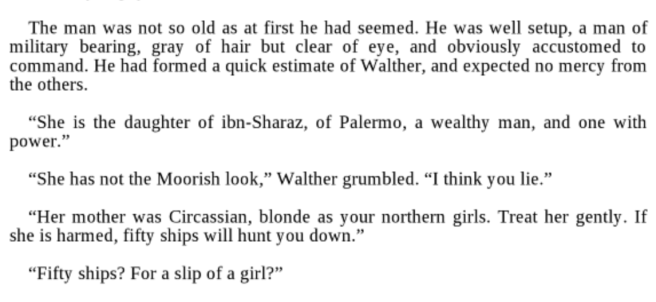
A Year among the Circassians

A Circassian beauty in Palermo
A Circassian blonde in play
From the Memoirs of Princess Emily Ruete: Circassian women, favoured with an aristocratic appearance, were hated by other women who were envious of fair Circassian features. Circassians were called “cats” because of their blue eyes.

The daughter of a Circassian [Emily Ruete’s half-sister] was a dazzling beauty with the complexion of a German blonde.
Circassian and Georgian women
By far the most frequently mentioned ethnicities or “races” of harem women were Circassian and Georgian associated with the Caucasus Mountains. Ranked above all other female harem inmates on the basis of their “white” (“Caucasian”) skin color, they became known to western commentators as the premium, most desired slaves who, because of their rarefied light skin or eyes, were most likely to be promoted within the harem to the rank of wife.
The characteristics of Circassian and Georgian women are articulated by the author Emma Reeve in 1839. She differentiates between the blond Circassians who are “indolent and graceful, their voices low and sweet” and what she slightly darker-skinned Georgians who are “more animated” and have more “intelligence and vivacity than their delicate rivals.” Similar descriptions of the Circassian harem women appear in Florence Nightingale’s travel journal, her only piece of writing not on the subject of nursing. She calls them “the most graceful, and the most sensual-looking creatures I ever saw (like dancers).” This (backhanded) compliment appears in the context of her overall judgement about the hellish nature of the harem, which she allegedly visited on her five-mounty sojourn to Egypt in 1849.
A related condemnation of the harem—and the opinion that the Circassians and Georgians are its only saving virtue—appears in the writing of the feminist-activist Harriet Martineau. Mothers from these two groups produce “the finest children,” and if they were to be excluded from the harem the upper class in Egypt would be doomed.


